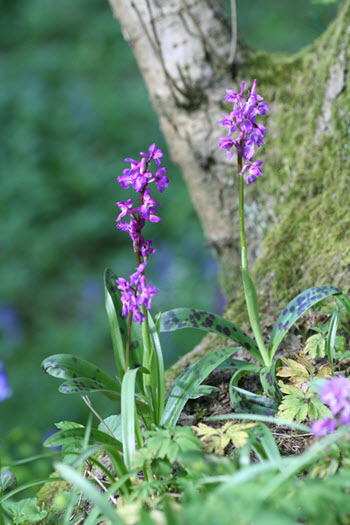Collecting flowering time observations of UK orchids to research the impacts of climate change
Image of Green-winged Orchid copyright Mike Waller
Orchid Observers is a new citizen science project led by the Natural History Museum in collaboration with the University of Oxford's Zooniverse. It combines field photography and recording with online transcription of museum herbarium specimens to investigate how orchid flowering times are being influenced by climate change.
Orchids are an important and much-loved component of the UK’s rich botanical diversity. Recent research* shows that the flowering time of one species – the Early Spider Orchid (Ophrys sphegodes) – is being affected by a changing climate. Orchid Observers aims to investigate if and how the flowering times of other UK orchid species are responding to these changes.
Addressing scientific challenges such as climate change requires large datasets from multiple field sites. Orchid Observers aims to create modern records from across the UK and to combine these with historical specimen data, building a 180 year time series of orchid flowering time that can be compared against key climate variables.
Of the 56 orchid species that are established in the wild in the British Isles, 29 taxa have been selected for the study (omitting the specially protected species, sub-species and varieties). Collectively, these species occupy a wide range of habitats and geographical distributions, which take in most regions across the UK.

The project team is asking volunteers to photograph orchids in flower in their local area and upload their images and field records to the Orchid Observers website. Here, as well as helping to classify and verify the species and flowering stage recorded in the photographs, participants can also help to extract phenology information from 15,000 historical herbarium specimens spanning three centuries.
As well as aiming to learn more about the phenological response of the UK’s orchids to environmental change, we hope that this project will add to our understanding of UK orchid distribution and population health more widely. All verified orchid records will be shared with the Botanical Society of Britain and Ireland (BSBI), supporting their research. As well as being of interest to existing naturalists, it is hoped that Orchid Observers will widely promote the role and value of recording and in doing so help to inspire the next generation of botanical enthusiasts.
If you are interested in participating or would like further information, please visit the website or you can also email.
N.B. Some orchids are protected by law and must not be picked. Many of the other species are declining and the Museum strongly supports the principle that no UK orchid should be picked unless there is a clear scientific need – in most cases, a well-taken photograph is sufficient. If you think you have found something unusual or important, please contact the Museum for advice.
* Robbirt et al., (2011) Validation of biological collections as a source of phenological data for use in climate change studies: a case study with the orchid Ophrys sphegodes. Journal of Ecology 2011, 99, 235–241.
